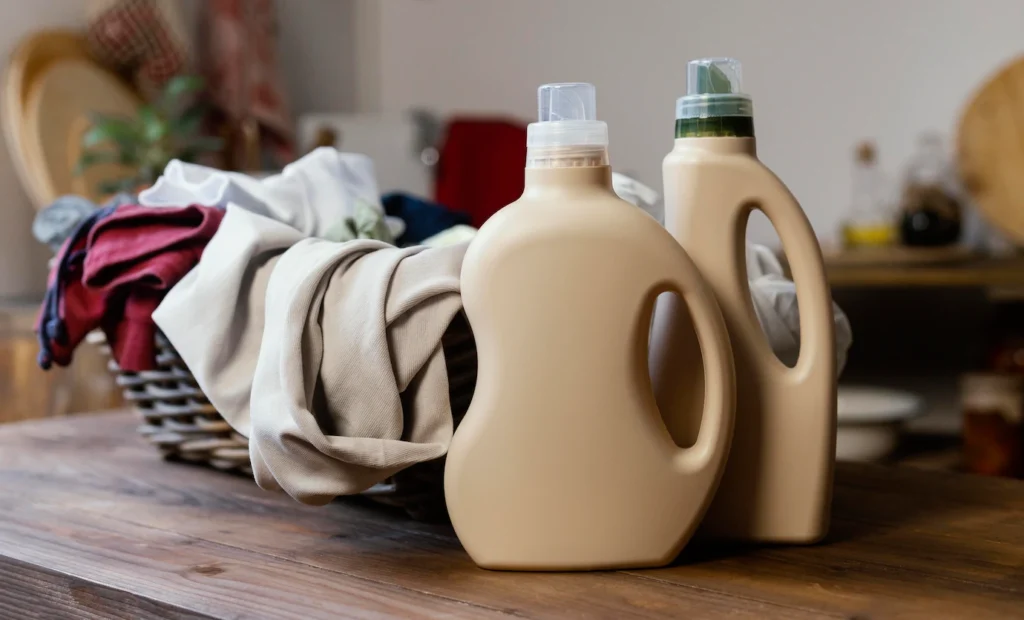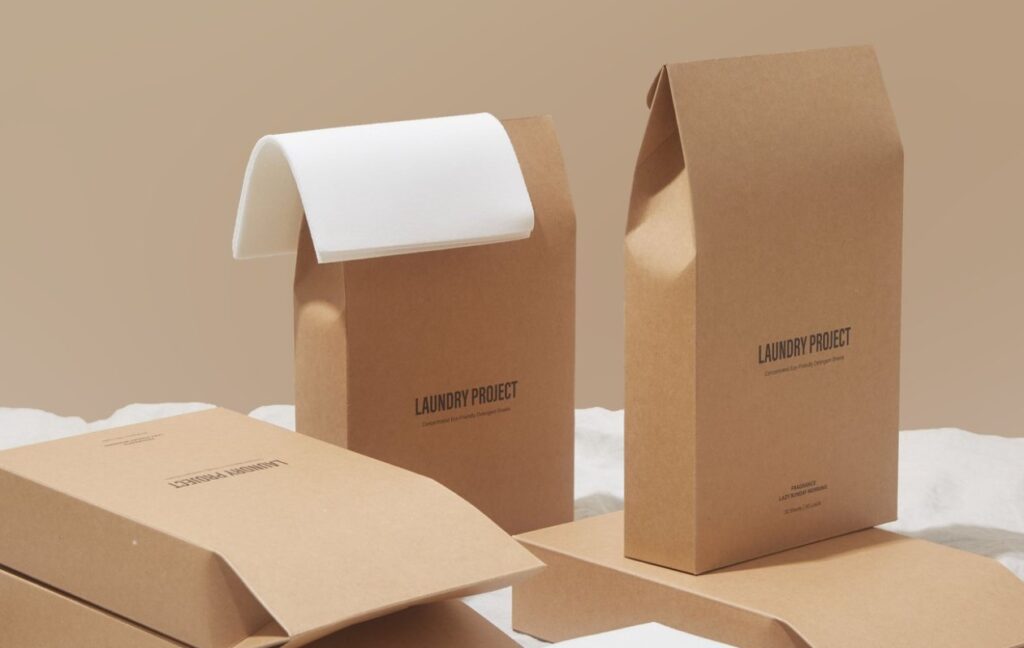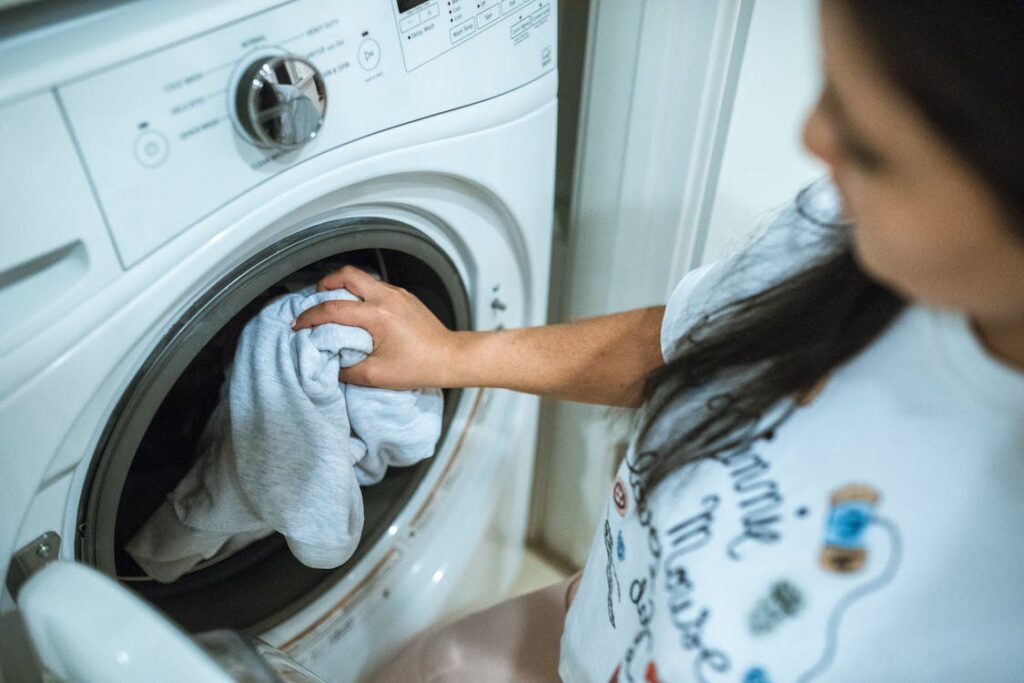If you’re like most people, you probably don’t think twice about using laundry detergent sheets. You just add them to your machine along with your clothes and hope for the best. However, there is a proper way to use these sheets in order to get the most out of them and ensure your clothes come out clean and smelling great. In this blog post, we will explore how to properly use laundry detergent sheets so that you can get the most out of them. We will also discuss some of the benefits of using these sheets over traditional liquid detergents. So if you’ve been wondering how to properly use them, read on for more information.
Different Types of Detergents

Source: freepik.com
• Powder: This is the most popular type. It is available in both scented and unscented varieties and can be used in both front- and top-loading washing machines. Powder detergents are generally less expensive than other types.
• Liquid: This is another popular type. Liquid detergents generally cost more than powder detergents but are less likely to leave behind residue on clothes.
• Gel: This is a newer type that is becoming more popular.
Whatever you choose, be sure to use a laundry detergent that is compatible with your washing machine.
What are Laundry Detergent Sheets?
Laundry detergent sheets are thin, flat sheets of detergent that are often sold in a box. They are an alternative to liquid or powder detergents, and can be used in the same way. They are typically more expensive than other types of laundry detergents, but they can be more convenient to use and last longer.
To use them, simply place one or two in your washing machine before adding clothes. The sheets will dissolve in the water and clean your clothes just like any other detergent. You can also use them to pre-treat stains by rubbing the sheet on the stain before laundering.
When to Use Laundry Detergent Sheets?

Source: pinterest.com
They can be added to the washing machine along with your clothes and other laundry items.
However, there are a few things to keep in mind when using laundry detergent sheets. First, they may not be as effective at removing tough stains as liquid or powder detergents.
Second, they can sometimes leave a residue on your clothes if you don’t use enough water when washing them. This is why it’s important to read the instructions on the package carefully and follow them closely. Finally, laundry detergent sheets can be more expensive than other detergents. If you’re on a budget, you may want to stick with liquid or powder laundry detergents.
How to Use Laundry Detergent Sheets?
If you’ve never used laundry detergent sheets before, you may be wondering how to use them properly. Here are some tips:
• Add the detergent sheet to your washing machine drum before adding clothes.
• Make sure the detergent sheet is in contact with all of your clothes.
• Wash your clothes as normal.
• If you have any doubts about whether or not the laundry detergent sheet is working, add an extra one to be safe.
• When you’re finished washing your clothes, remove the detergent sheet from the washing machine drum and dispose of it properly.
The Benefits of Using Laundry Detergent Sheets

Source: pexels.com
When it comes to doing laundry, there are many different types of detergents that you can use. Each has its own set of benefits and drawbacks. One type of detergent that has become increasingly popular in recent years is laundry detergent sheets. These sheets offer a number of benefits over traditional liquid or powder detergents.
One of the main benefits of using laundry detergent sheets is that they are very easy to use. Simply place a sheet in your washing machine along with your clothes and let it do its job. There is no measuring or pouring required as with liquid or powder detergents. This can save you time and effort, especially if you have a large load of laundry to do.
Another benefit is that they are less likely to cause skin irritation than other types of detergents. This is because the ingredients in these sheets are more evenly distributed throughout the fabric of your clothing, rather than being concentrated in one area like with liquids or powders. This can be a great advantage for people who have sensitive skin or who are prone to allergies.
Lastly, they tend to be more effective at removing stains and dirt from clothing than other types of detergents. This is because the sheets dissolve completely in water, which allows them to penetrate deep into fabrics and loosen up even the most stubborn stains. If you have been struggling to get your clothes clean with traditional methods, switching to laundry detergent sheets may give you the results you have been looking for.
The Different Types of Laundry Detergent Sheets
Laundry detergent sheets are a type of laundry detergent that comes in the form of thin, flat sheets. They are usually made from a combination of soap and fabric softener. Some brands also add other ingredients, such as enzymes, to their laundry detergent sheets to improve their cleaning performance.
Laundry detergent sheets have several advantages over traditional liquid or powder laundry detergents. They are easy to use and don’t require any measuring. Just toss a sheet into the washing machine along with your clothes. They also dissolve quickly and completely in water, so there’s no risk of them leaving behind any residue on your clothes.
One thing to keep in mind when using them is that they can sometimes cause static cling. To avoid this, simply add a fabric softener sheet to your load of laundry along with the laundry detergent sheet. This will help reduce static cling and leave your clothes feeling softer and smelling fresher.
Conclusion
Laundry detergent sheets are an easy and convenient way to do laundry, but it’s important to use them properly. Be sure to read the instructions on the packaging before using, and always store them out of reach of children and pets. With a little bit of care, laundry detergent sheets can help you get your laundry clean with ease.
